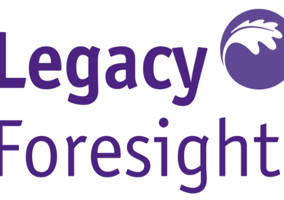Bigger not better
Traditionally, the legacy market has been dominated by a few very large, generally long-established charities, and that’s still the case. However, their control is reducing. Back in 2006, the top 10 legacy charities had accounted for a third of all legacy income while they now account for a quarter.
In fact, it’s the smallest, youngest charities who are seeing the fastest growth. Charities founded after 1970 now account for £1 in every £5 of legacy income – and their combined income is growing at 10 per cent p.a.
If you are from a small, young charity, you are probably not aware of this – it may be that your income is highly volatile year on year. That’s why it is so important to be able to see your own performance in context – to stand back and see the bigger picture.
EU uncertainty
Due to Brexit, no-one can say how the British economy will perform over the next 10, 20 or 30 years. Brexit may prove a triumph, it may prove a disaster. But for now, inevitably, we are living in a state of extreme uncertainty.
Both businesses and households are putting off important decisions about investment, jobs, education and housing because they just don’t know what’s best. In the short term, this is certainly having an impact on economic growth and on house prices – which in turn are impacting residual legacy values.
As residual bequests make up 85 per cent of income this will, of course, affect legacy incomes overall. Legacy Foresight estimates that the difference between a good and a bad Brexit for the UK legacy market is around £2bn over the next 5 years.
Rare but large gifts
Across our 83 Legacy Monitor consortium members, 8 per cent of gifts with values of £100,000 or more account for over half of total income.
Some 2 per cent of all bequests received are worth over £250,000 and account for 30 per cent of all income.
We know that all gifts in wills are important and all are heartfelt. But, the biggest impact comes from that small number of exceptionally large legacies.
If you apply these statistics across the sector as a whole, it would mean that less than 10,000 gifts are responsible for 8 per cent of the whole sector’s voluntary income.
Whether those gifts come from childless people leaving the bulk of their estate to charity, or rich people giving a fraction of their wealth to good causes, identifying, targeting and stewarding these ‘major legacy donors’ in appropriate, integrated ways is crucial to your organisation’s long-term performance.
Seven year itch
As every legacy fundraiser knows, there is a long lag between someone writing your charity into their will and you receiving that gift. The average residual gift takes seven years between the last will being written and the final pay-out. In reality, it may be far longer as the gift may have been written into the will initially many years before.
This is why it’s so difficult to measure the effectiveness of legacy marketing spend – the legacy income you receive today may well have been triggered by communications years ago.
Irrespective of when the gift was first thought of, it is the final will that counts.
Declining death rates
The number of deaths-per-year has been falling for the past three decades, making it all the more impressive that the number of legacies received has been climbing during this time.
However, this downward trend has now reversed and in the past two years, the number of UK deaths rose to over 600,000 a year, with the number expected to reach 700,000 a year by the mid-2030s.
If the number of deaths rises, the number of legacies increases too. I know that fundraisers are often nervous about talking about deaths, but the overarching demographic story is positive – over the past twenty years, life expectancies have been rising fast.
For me, the key question is how we can have a good death – leaving a legacy or making an in-memory gift can be an important part of that process.
One-in-five
Today one-in-five deaths are baby boomers. By 2030 that figure will be one-in-two.
The good news is that boomers are more open to the idea of leaving a charitable legacy than older generations. They are, on the whole, a large, affluent, confident and liberal group.
We also know that they are spending considerable sums on their children and grandchildren now. Our research has picked up a feeling that in today’s risky society their family will always need their money, even after they are gone.
For legacy fundraisers, the challenge will be encouraging - and inspiring - boomer donors to make a space in their will for charity, alongside family and friends.
Minimal investment
Last year we did a benchmarking project with 36 leading charities, to understand more about how they invested their marketing budgets and how effective they were in generating a response. Across these 36 mainly large legacy charities, legacy income was vitally important – on average it made up 40 per cent of fundraising income.
But when it came to spend, the story was very different – legacy marketing represented just 3 per cent of fundraising and communications budgets. So why is there such a mismatch between income and budgets?
The optimist would say that legacy fundraising is incredibly effective, with £59 of income received for every £1 of spend. The pessimist would say that charities are woefully underinvesting in legacy marketing, and you should be spending far more.
Growing estates
This figure may the most important one in this blog. It’s the percentage of all the money in estates which is left to charity.
For as long as I can remember it has been 3 per cent and now it has climbed to 3.6 per cent. That may not sound much of an increase, but it is significant. It is a tribute to all of those working as legacy fundraisers and to the work of Remember A Charity in particular. It suggests that the legacy message is finally getting through which is good news for all us all.
Total giving is up too. We have been tracking the legacy sector for 25 years, and according to our analysis, total UK legacy giving is now worth £2.96bn. According to NCVO, legacies represent 15 per cent of all voluntary income and 6 per cent of all income across the sector as a whole.
We’re no.1
Last but not least, in my opinion, the British legacy sector is the best in the world for a number of reasons.
We are lucky in our legal system – British people have the right to leave their money to whoever they choose. We have a network of probate courts to scrutinise the wills read and Smee & Ford’s monitoring service to ensure that charities know when they are left a gift.
We also have a long-established, vibrant not-for-profit sector, with charities covering every possible cause area and population.
With rising deaths and Brexit likely to dominate legacy headlines over the coming years, I would encourage all those legacy fundraisers out there to keep the faith.
|
Related Articles












